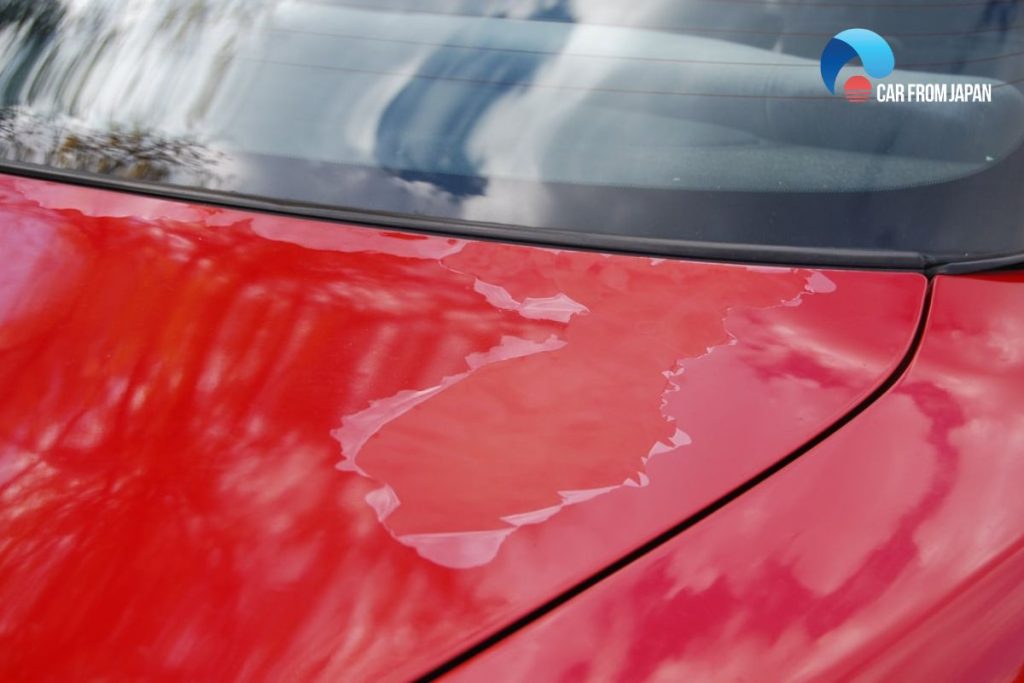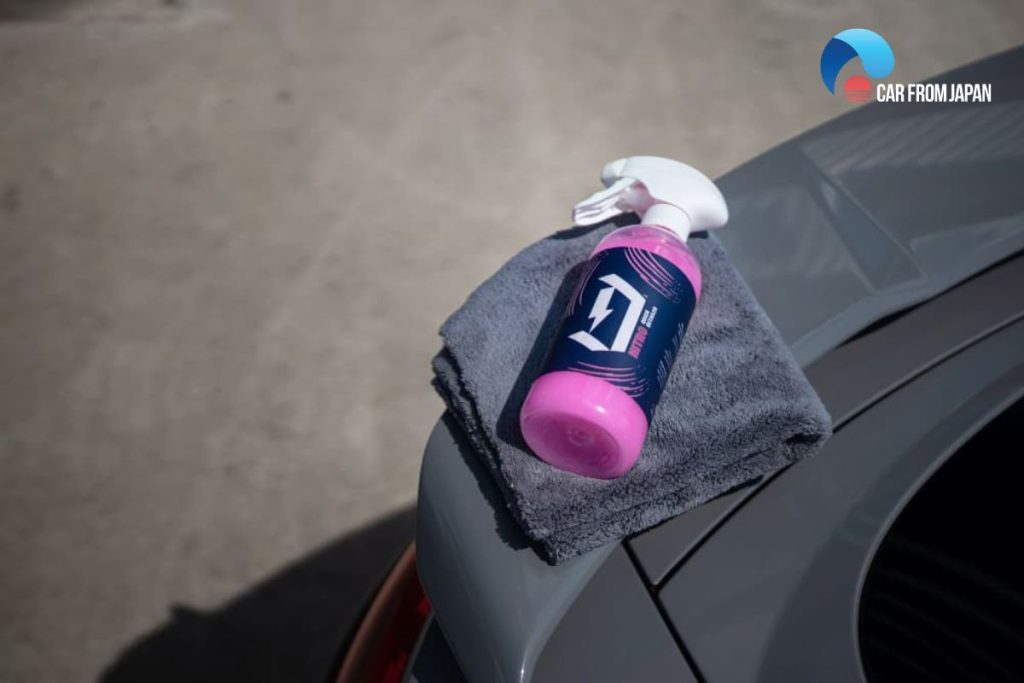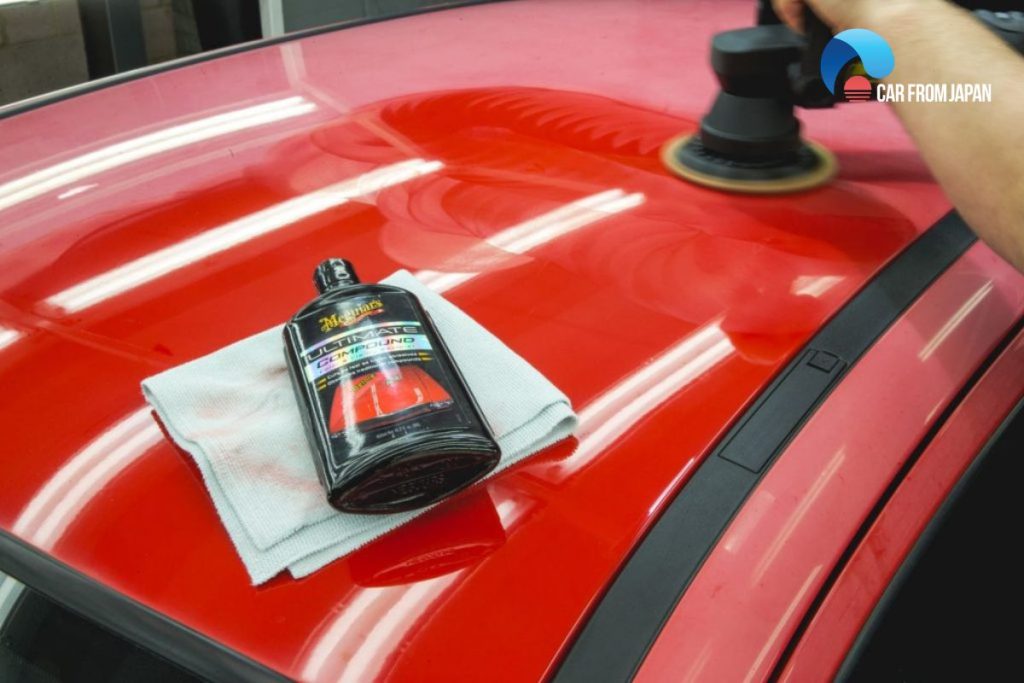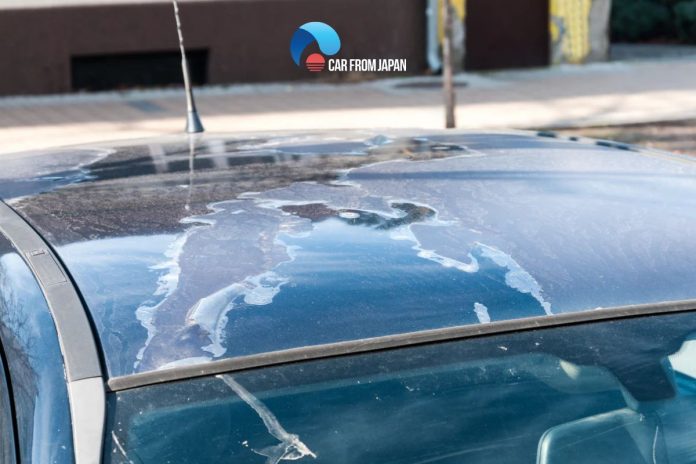Learning how to remove clear coat from car, and importantly without damaging the underlying paint, is an important skill you should master to ensure your vehicle always looks its best.
A clear coat is a transparent layer of paint on top of a vehicle’s paint job that provides some protection to the colored paint from minor scratches, dust, corrosion and environmental impacts, thus improving the longevity of the color and the glossy shine.
However, just like every other kind of finishing, it sustains scratches and deteriorates from exposure to the elements, and when it starts to peel off, you will need to remove the whole thing and replace it.
Small cracks and scratches can lead to bigger, more permanent damages, so at a certain point, you will need to address and repair those damages and remove the blemished clear coat to apply new layers of clear coats on top to restore your vehicle to its original gloss.
That said, it is common for DIY car owners to damage the underlying paint and other parts during the removal process. Worry not, just follow our step-by-step guide and you will be fine.
Contents
How To Fix Minor Clear Coat Damages?
In case of less serious damages to the clear coat that might not require complete removal, you can repair the clear coat damage to a certain extent by first using a degreaser to remove any wax that might be present on the car’s exterior.
Then take the painter’s tape and tape off the area where you will be working; you should go about an inch past where the original clear coat ends.
Use 800-grit sandpaper to sand the clear coat down. As you work away from the damage, use a lighter hand on your sanding, as you are trying to establish a smooth transition from the damage to the undamaged areas without leaving any lump or roughened line where the old clear coat ends.
Now you can use a spray-on clear coat on the section that you just sanded. You’ll need to apply multiple layers until the whole surface looks even and smooth. Apply in light coats and allow each coat to dry completely before applying the next coat.
Applying Another Clear Coat Over a Clear Coat
Many car owners wonder if they can apply another spray-on clear coat over the car’s original clear coat. The answer to this question heavily depends on the condition of the first clear coat layer.
If it is in good condition with no visible damages like peeling or serious scratches, then you can apply another layer of clear coat on top to enhance the gloss and shine of your vehicle’s paint job.
If the clear coat has any damages that cannot be corrected with another top coat, you will have to repair those damages as outlined above before you can go on applying a new clear coat on top.

How to Remove Clear Coat From Car: What To Notice?
Friendly Reminder
Removing the clear coat from the entire surface of your vehicle is a laborious and elaborate process that requires certain tools, skills and a lot of patience.
Furthermore, without a high level of workmanship, this DIY project may easily cause damage to the various parts and components of your car.
If you are not familiar with car maintenance and exterior treatment, it is best to leave the job to a trained expert or qualified mechanic.
The costs to repair the additional damages would likely offset any savings from trying to remove the clear coat from the car by yourself after all.
Do Not Use Paint Thinner
Another important reminder is to not use paint thinner to remove clear coat from car. It may remove the clear coat but it will probably take several applications of the thinner, and in the process of removing you will likely also remove the underlying paint.
Only use paint thinner to remove your clear coat surface in case you no longer want that paint job.
Some car owners might recommend you try mineral spirits instead for safe removal and use fine grit sandpaper to rub away any blemished clear coat areas.
However, it is recommended by professionals that you use certain tools and agents and strictly follow the process below to remove a clear coat from your car without damaging the paint.
What You Will Need To Remove Clear Coat From Car
Before we move on to the process of how to remove clear coat without damaging paint, below are some tools and materials that you will need to perform the job efficiently while being gentle on the underlying paint job.
Washing the hose and water for rinsing is the first preparation step before the actual removal process.
Specialized buffing compound: The safest way to remove clear coat without damaging the paint is to use a buffing compound or a specialized clear coat-removing agent.
Sandpaper: 400 grit, 800 grit, 1000 grit, 1,200 grit
Wax: Waxing is a requirement for every procedure of exterior treatment, although it might be quite a laborious process without electric tools.
Never sacrifice the quality of the wax for a mirror-image gloss and long-lasting results.
Electric polisher: Manually polishing the entire exterior surface of a vehicle is no doubt a long and hard process, not to mention it is unlikely that you will achieve a spotless, even finish at the end.
With an electric polishing device, you get the work done faster without expending excessive physical labor.
An electric polishing machine is a tool you will get a lot of use out of, since you will need to wax and polish your car regularly, so it is a reasonable investment if you prefer to take care of your baby in your garage.
100% wool buffing pads: These pads are made up of 100% wool concentration and do not budge like a towel, so they are more efficient in material removal.
100% wool pads are really important in working on the buffing compound as they can hold up to as much product as you want.
Spray Detailer: This is for cleaning and finishing off the car’s surface after removing the clear coat and buffing compound.
A quick wax spray detailer will elevate shine and remove all harmful substances from the surface, restoring your vehicle to a smooth, even, and shiny paint job.

The Step-by-Step Guide on How to Remove Clear Coat From Car
Wash the vehicle
This is an essential step to prepare for an easier and more effective removal of clear coat, so never skip it. Paint repair and maintenance jobs generally require extra clean surfaces.
This makes sure the whole surface is clean and no debris or dirt is present while you start applying treatment products on it, which would lead to further damaging scratches on the already blemished surface.
First, to prepare for step 2, soak the sandpaper in water. Now you can go ahead and wash the vehicle thoroughly.
You can use a duster or soft brush to gently get rid of as much dust as you can, then use a garden hose to rinse off any remaining dust and debris before starting to soak the vehicle in soap. This step would minimize the risk of making new scratches while scrubbing.
If needed, take extra time to soak the car with a soft sponge, taking care not to generate new scratches and dents in the process. Then rinse with a garden hose.
As soon as you are done cleaning the vehicle, use a soft and dry cloth to wipe off excess moisture. Be sure to let the vehicle dry completely in a well-ventilated area.
Wet-sand the clear coat
Now proceed to wet-sand the clear coat material with the 400 grit sandpaper that you had soaked in water in step 1 above.
This step is perhaps one of the most significant in the entire process, so allow yourself quite a bit of time and make sure you get it right.
Rub the wet sand paper gently atop the surface to even out the scratches and weaken the clear coat. Try to sand only about 1 inch around any scratch or problem area.
Continue wet sanding with higher-grit sandpaper
After you have wet-sanded the entire car with the 400-grit sandpaper, move on to the finer and higher-rated sander. Slowly introduce the 800 grit, 1,000 grit, and finally the 1,200 grit sandpapers.
At this stage, commence sanding at about ½ inches outside of what you previously sanded using the 400-grit sandpaper.
Wet-sanding is a crucial step that will significantly affect your outcome, so take your time and work slowly, check your work regularly to adjust yourself if needed.
To ascertain whether you are making any progress, stop to feel work surface by hand.
The best outcomes should appear like the crosshatch and the surface you worked on should also feel very smooth to the touch. You might have to make a couple of extra passes if the surface is yet to feel smooth.
Prepare the delicate parts
As soon as you are satisfied with the results after two stages of wet-sanding, proceed to tape the more delicate parts and surfaces of the car to make sure they won’t be affected in the next step.
Examples of these delicate parts include tail lights, headlights, mirrors, handles, screen wipers, and rims. This is in preparation for the application of the undercoat which might normally interfere or even compromise these parts.
Dry-sanding
Proceed to dry-sand the surface. For this step, the car has to be completely dry.Use finer grit sandpaper such as 600 or 800-grit sandpaper to do the job. The goal of this step is to achieve extra smoothness and even finishes.
While dry sanding, you need to pay extra attention to the pattern in which you are sanding. It is advisable to sand at an angle of 45° while tackling scratches. For normal scratches, you just have to go with the natural grains for optimal outcomes.
Rinse & Dry
Now use a hose to rinse the car to rid it of the finer grit and particles after dry sanding. Check the nature of the wastewater to see to it that it turns milky.
If it does, it is the right time to stop sanding, as at this stage, any further sanding might interfere with the undercoat. Wipe the surface with a clean cloth and leave to dry completely.
Finish off with grit paper
After rinsing and drying the car out, it is time to give it a touch-up before the next two buffing steps.
For that, using a light hand, you need to apply fine grit paper all over the surface to even out any remaining bumps or any appearance of coarseness.
Buff the sanded surface
After the sanded portion is now smooth and even, finish off by applying polish to the work surface of the car. Set the electric polisher at a lower rotational speed of around 1,200-1,400 revolutions per minute.
Apply the polish evenly to the entire surface. Work consistently in a circular motion, as this technique ensures some overlap and makes sure that every bit and piece of the surface is worked on.
Alternatively, if you do not have the electric polisher, you may use the 100% wool pad to do the job manually.
If you’re buffing by hand, remember to wear protective gloves and use the polish sparingly to avoid sustaining burns or compromising the quality of the final outcomes.
At this stage, the scratches will have already become unnoticeable. However, the surface will be left with some swirls which you will have to get rid of.
Use the finishing polish and switch to a softer polishing pad, then feel free to run the electric polisher at higher revolutions per minute to generate a stronger shine faster.
Buffing with compound

Using the 100% wool pad to start buffing the second time, this time with the buffing compound or specialized clear coat removing-agent using a higher revolutions per minute on the electric polisher.
The scratches and any imperfections should be long gone if you properly performed the previous polishing step, but still, a finishing touch-up using the soft wool pad and the buffing agent would considerably enhance the overall outcome.
The compound needs to be buffed carefully as it can burn the paint if used carelessly. If you’re unsure, you can test the buffing agent on a spare part if available to make sure the solution is safe and mild for usage.
Finish off the polish
Lastly, clean the polished area to get rid of remaining particles to make it look even brighter and shinier. Apply the spray detailer on the polished areas to bring about the extra glossy finish.
Some car owners would stop here, but if you are a perfectionist, never skip waxing in any car exterior treatment as it gives much more evenness and shine to the paint job.
While at it, do not leave the polisher on a single spot for too long to avoid leaving streaks behind or potentially damaging your hard work up until now.
How To Remove Clear Coat From Car: Pro Tips
- Perform the clear coat removal process in a garage or any shaded area, ideally when it is not too hot outside to prevent the clear coat remover from drying out.
- Avoid working on high humidity days as your car might not dry completely after certain steps.
- Clear coat removing agents can be applied with spray bottles. Must be extra careful because the excess product can be spritzed all over the surrounding surfaces.
- The buffing clear coat remover can also get rid of the paint, so make sure it is not applied too far away from the problem areas. If needed, remove the car part you are working on so the remover doesn’t go to the other surfaces.
- If the clear coat is hard to remove in certain areas, you might need to apply a bit more of the clear coat removing agent for proper removal. Buff the areas with a scuff pad after applying the removing agent on the problem area.
- While buffing, do not keep the buffer on a single spot for too long to avoid damage to the work surface.
FAQs on Removing Clear Coat From Car
Does vinegar help remove clear coat safely?
No, vinegar is too weak to effectively remove clear coat. While it may help clean oxidation, it won’t strip the clear coat evenly and could leave a blotchy appearance.
Is it possible to remove just a section of the clear coat without affecting the rest?
Yes, but it requires precision!
Using a fine abrasive polish or wet sanding with a high-grit sandpaper (e.g., 2000-3000 grit) in a controlled manner can help blend the area without damaging the base paint.
What’s the safest DIY method for removing clear coat?
The safest approach is wet sanding with 2000-3000 grit sandpaper, followed by polishing.
Avoid aggressive sanding and always use water to minimize heat buildup and surface damage.
Can toothpaste be used to remove clear coat?
No, toothpaste is too mild to remove clear coat. It can help with minor scratches but will not be effective in clear coat removal.
Check out this video from Mad4Motors to visually learn more about how to remove clear coat from car!



